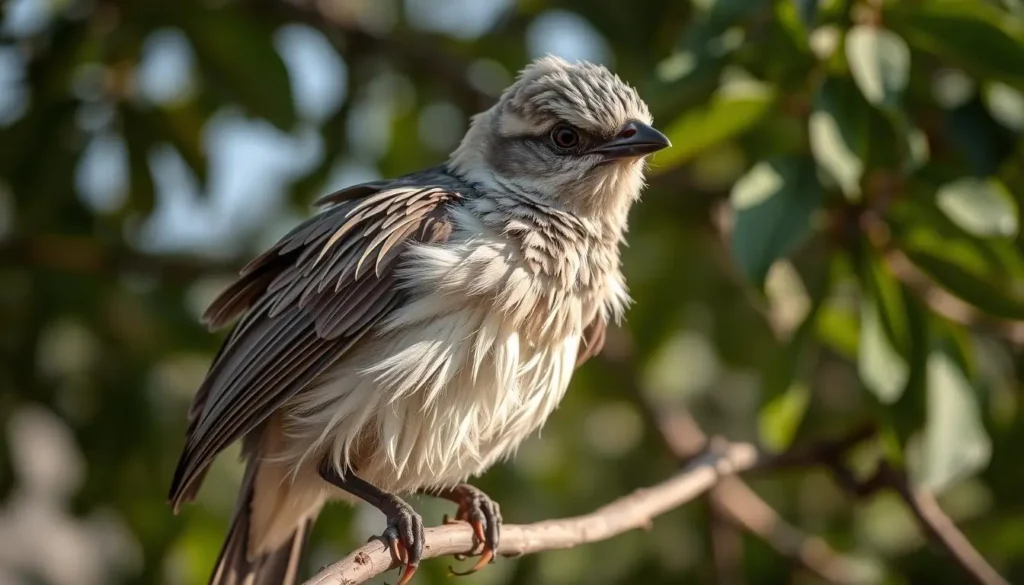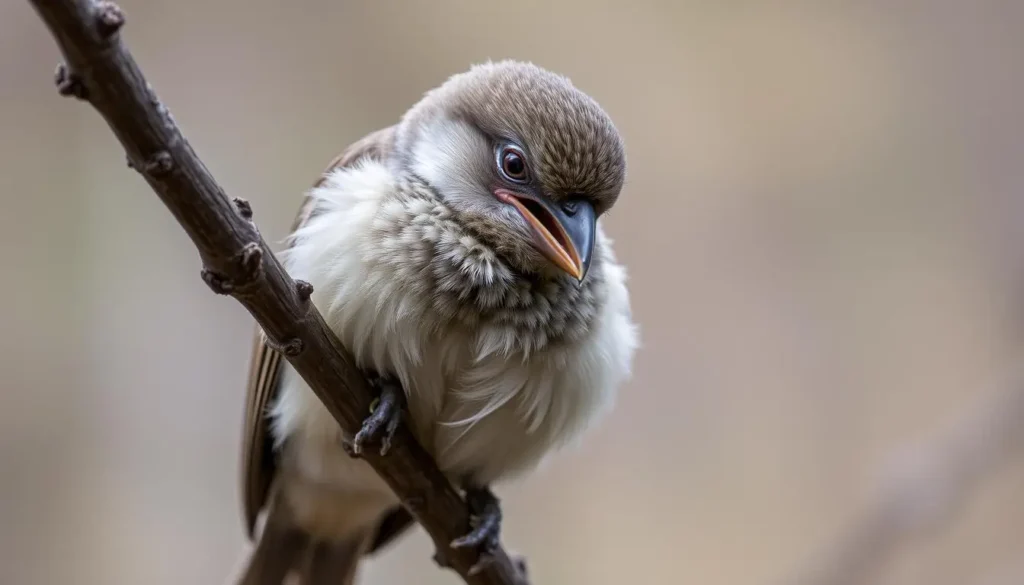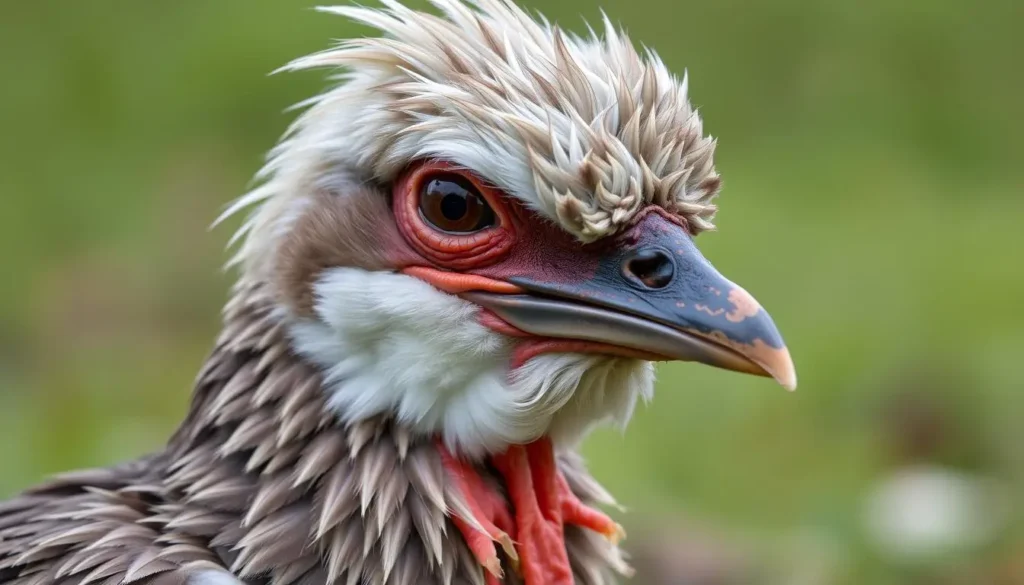If you live in California, knowing about bird flu is important. This disease can affect many birds in our state. Spotting it early helps keep birds and people safe.
Learning the signs of bird flu helps you act fast. This protects your local bird community. It also stops the disease from spreading to humans.

Table of Contents
Understanding Bird Flu and Its Impact in California
In recent years, bird flu, or avian influenza, has become a big worry for Californians. The 2024 bird flu outbreak and the California emergency bird flu situation have made people more aware of the dangers. It’s important to know about this disease and its effects on the state to protect both people and animals.
Current Status of Avian Influenza in California
Reports show that several areas in California have seen cases of highly pathogenic avian influenza (HPAI) in birds. This includes the Central Valley, the San Francisco Bay Area, and parts of Southern California. Officials are working fast to stop the outbreak, make sure places are safe, and watch the situation closely.
Why Bird Flu Awareness Matters
The spread of avian influenza can harm California’s poultry, wildlife, and even people. It can cause big economic losses, mess up food chains, and risk spreading to humans. By being aware and alert, Californians can help spot problems early, prevent them, and respond well to reduce the bird flu’s effects.
| Key Facts | California Bird Flu Situation |
| Affected Regions | Central Valley, San Francisco Bay Area, and Southern California are key regions in California known for their diverse landscapes and unique cultural offerings. |
| Virus Strain | Highly Pathogenic Avian Influenza (HPAI) |
| Potential Impacts | Economic losses, disruption to food supply, risk of zoonotic transmission |
By knowing the current situation and the need for bird flu awareness, Californians can help protect their communities from avian influenza outbreaks.
Physical Symptoms and Behavioral Changes
Spotting bird flu symptoms and avian influenza signs in birds is key. These signs can warn of a bird flu outbreak early. Knowing these signs helps protect birds and stop the disease.
Look for changes in how birds act. Sick birds might seem tired, less active, and not as alert. They could also have trouble moving or standing up right.
- Decreased activity and mobility
- Lethargy and reduced responsiveness
- Unsteady gait and balance issues
Physical signs of bird flu include:
- Discoloration of the comb, wattle, and/or legs, which may appear purple or blue-tinged.
- Swelling around the eyes, head, and neck.
- Diarrhea and other gastrointestinal issues.
- Respiratory distress may manifest as coughing, sneezing, or trouble breathing.
| Symptom | Description |
| Discoloration | Comb, wattle, and/or legs may appear purple or blue-tinged. |
| Swelling | Around the eyes, head, and neck. |
| Diarrhea | Gastrointestinal issues. |
| Respiratory Distress | Coughing, sneezing, or difficulty breathing. |
By watching for these bird flu symptoms and avian influenza signs, you help early detection. This protects the health of local birds.

Respiratory Distress and Breathing Problems
It’s important to know the signs of respiratory distress in birds. This is key to spotting avian influenza, or bird flu, in California. Bird flu can harm a bird’s breathing system, causing symptoms that need quick action.
Types of Respiratory Symptoms
Birds with bird flu may show different breathing problems, such as:
- Rapid, labored breathing
- Open-mouthed panting or gasping for air
- Nasal discharge or sneezing
- Coughing or wheezing
- Gurgling or rattling sounds when breathing
When to Be Concerned About Breathing Issues
If you see any of these bird respiratory problems in your area, watch closely. Severe or ongoing breathing trouble could mean avian influenza breathing issues. These can get worse fast and harm the bird’s health. If you’re worried about a bird’s breathing, reach out to California bird health experts.

“Prompt detection and reporting of respiratory symptoms in birds can help curb the spread of avian influenza and safeguard the health of local bird populations.”
Neurological Signs of Bird Flu
The avian influenza virus, or bird flu, is spreading in California’s bird populations. It’s important to know the neurological symptoms it causes. These signs help us understand how the disease is progressing and help authorities keep track.
One key symptom is disorientation. Birds with bird flu may stumble, seem confused, and have trouble moving around. This shows the virus is affecting their nervous system.
Another symptom is seizures or tremors. These signs show the virus is harming the bird’s brain. This could lead to permanent damage.
Some birds also lose their balance and can’t stand or perch right. This is worrying because it means the virus might be messing with their motor skills.
“Identifying neurological symptoms early is vital for controlling the spread of avian influenza and preserving the health of California’s diverse bird populations.”
By watching for these signs, wildlife experts and bird lovers in California can help stop bird flu. They can catch and deal with the problem early.

| Neurological Symptom | Description | Potential Cause |
| Disorientation | Lack of coordination, stumbling, and confusion in navigating the environment | Direct impact of the virus on the bird’s nervous system |
| Seizures or Tremors | Uncontrolled muscle spasms or involuntary movements | Disruption of normal brain function by the virus |
| Loss of Balance | Inability to stand or perch properly | Interference with the bird’s motor skills and coordination |
Changes in Eating and Drinking Patterns
When birds get bird flu, their eating and drinking habits change a lot. These changes can show how sick the bird is and its overall health.
Loss of Appetite Indicators
One key sign of bird flu is when birds don’t want to eat. They might not be interested in food, or they might not go to the feeding area. Watching how your California birds eat can help you spot these signs early.
Dehydration Warning Signs
Bird flu can also make birds dehydrated. You might see them drinking less water or look for signs of dryness like sunken eyes. These signs are important because dehydration can get worse fast and harm the bird’s health.
It’s important to watch for changes in how your California birds eat and drink. Spotting these signs early can help protect your birds. If you see any, get them to a vet right away.
| Symptom | Description | Significance |
| Loss of Appetite | Reduced interest in food, reluctance to approach feeding areas, disinterest in regular diet | Early indicator of bird flu, can lead to health complications if left unchecked |
| Dehydration | Drinking less water, sunken eyes, lack of skin elasticity | Serious consequence of bird flu that requires immediate attention to prevent further deterioration |
Visible Physical Deterioration
If you own birds or love wildlife in California, knowing about bird flu symptoms is key. These signs can tell you a lot about the health of birds around you.
One key sign of bird flu physical symptoms is when a bird’s feathers look bad. You might see feathers that are messy, not the right color, or falling off. This shows the bird is not taking care of itself, which is a sign of sickness.
Also, avian influenza appearance changes can show in how a bird acts. Sick birds might look tired, slouch, or have trouble moving. This is a big worry sign that something is wrong with the bird.
Another sign is when a bird’s eyes, comb, or wattle get swollen or change color. This could mean there’s an infection or inflammation inside. It’s a sign that the bird’s health is getting worse.
| Visible Symptom | Description |
| Feather Condition | Ruffled, discolored, or falling out |
| Posture and Body Language | Lethargic, hunched, or difficulty standing |
| Swelling or Discoloration | Around the eyes, comb, or wattle |
By watching for these signs of bird flu physical symptoms, you can help keep an eye on California’s bird health. Early spotting and reporting can really help stop bird flu from spreading. It’s all about keeping our feathered friends safe and healthy.

Bird Flu Transmission Patterns in California
As the bird flu 2024 season gets closer, it’s key to know how it spreads in California. This virus can harm local bird populations and affect human health too.
High-Risk Areas in California
Some areas in California are more at risk for bird flu. These spots have lots of migratory birds, big poultry farms, or are near wetlands. The most at-risk places are:
- The Central Valley, known for its extensive agricultural and poultry operations
- The San Francisco Bay Area, which serves as a major stopover for California bird migration
- The Salton Sea region, home to a diverse array of wetland-dependent species
Seasonal Patterns and Migration Impact
The bird flu in California follows the birds’ migration. Birds carry the virus as they move, spreading it across the state. The worst of the bird flu 2024 season usually happens in spring and fall.
Watching how the virus moves with the birds is vital. This helps find and stop the virus early. Knowing these patterns helps officials get ready for the bird flu 2024 in California.
Emergency Response to Suspected Cases
If you think a bird in California might have bird flu, act fast and responsibly. The California emergency bird flu plan has key steps to stop the disease from spreading. These steps help keep everyone safe.
- Right away, tell the authorities if you see signs of avian influenza response in your birds or wild ones. Call your local wildlife agency or the California Department of Fish and Wildlife.
- Keep the sick birds away from others. Don’t touch them. This reduces the chance of bird flu reporting and spreading.
- Write down any changes in the birds’ behavior or symptoms. This info helps experts figure out what’s happening and how to act.
- Follow all advice from the authorities. They might ask for tests, quarantine, or other steps to stop the disease.
Quick and careful California emergency bird flu reporting is key to controlling the outbreak. Together, we can protect our birds and keep our communities healthy.
| Key Contacts for California Bird Flu Reporting | Contact Information |
| California Department of Fish and Wildlife | 1-888-334-2258 |
| USDA Avian Health Hotline | 1-866-536-7593 |
| Local Animal Control | Varies by location |
Remember, quick avian influenza response and reporting are vital to stop bird flu in California. By working together, we can protect our birds and keep our communities safe.
Prevention and Biosecurity Measures
Keeping birds safe from bird flu is key in California. We must use good prevention and biosecurity steps. This helps protect both wild and domestic birds from this disease.
Essential Protective Steps
To stop bird flu, take these important steps:
- Keep all areas where birds live clean by disinfecting and cleaning coops, feeders, and waterers.
- Limit who comes to your place and keep your birds away from wild birds.
- Watch your birds for sickness signs and tell the authorities right away if you see anything odd.
- Use strict biosecurity like wearing protective clothes and cleaning tools when handling birds.
- Learn and teach others about bird flu prevention and avian influenza biosecurity.
Maintaining a Safe Environment
It’s crucial to keep a safe space for birds to stop avian influenza in California. This means:
- Make sure there’s good air flow in bird areas.
- Check the water for any bad stuff.
- Keep rodents and pests away to stop disease.
- Feed your birds well to keep them healthy.
- Know the latest California bird protection rules and tips.
By following these steps, you help keep California’s bird population safe and healthy.
| Prevention Measure | Description | Importance |
| Regular Disinfection | Cleaning and disinfecting all areas where birds are present, including coops, feeders, and waterers. | Helps eliminate potential sources of infection and reduce the risk of disease transmission. |
| Restricting Access | Limiting contact between your birds and wild or migratory birds by restricting access to your property. | Minimizes the risk of introducing the virus into your flock from external sources. |
| Implementing Biosecurity | Wearing protective clothing and disinfecting equipment when handling your birds. | Helps prevent the spread of the virus from infected birds or contaminated surfaces. |
| Monitoring and Reporting | Closely monitoring your birds for signs of illness and reporting any suspicious symptoms to the authorities. | Early detection and reporting can aid in the containment of outbreaks and prevent further spread. |
When to Contact Wildlife Authorities
It’s important to know when to report bird flu in California. Early detection helps stop the virus from spreading. This protects both wildlife and people.
Notice any odd signs in birds? Contact the California Department of Fish and Wildlife right away. They have the skills to check bird flu cases and act fast.
- Look out for signs like trouble breathing, acting strangely, or not eating/drinking right.
- When you report it, tell them where it is, what kind of bird, and any other important details.
- The experts will then decide what to do next. This could be watching the birds, testing them, or taking steps to stop the virus.
Quickly telling wildlife authorities about bird flu is key. It helps them keep an eye on the virus and protect birds. Together, we can reduce the harm of bird flu and keep California’s wildlife safe.
“Early detection and reporting of bird flu is essential for our wildlife agencies to mount a swift and effective response. Every report from the public helps us better understand and manage this threat.”
– Dr. Sarah Greenwood, Avian Influenza Expert, California Department of Fish and Wildlife
Conclusion
Bird flu awareness is key to keeping California’s birds safe. Knowing the signs and how it spreads helps a lot. It’s important to watch out and act fast to protect our bird friends.
If you love birds, work with animals, or just care about health, knowing about bird flu matters. By keeping an eye out and telling others, you help fight this disease. This helps keep California’s bird life healthy.
Let’s all work together to keep our bird friends safe. With our help, California’s birds will keep flying high for years to come.
FAQ
What are the common signs of bird flu in California birds?
Look out for signs like respiratory distress and neurological issues in California birds. Also, watch for changes in eating and drinking habits. Visible physical decline is another warning sign.
Be on the lookout for subtle behavioral changes too. These can be just as important as obvious symptoms.
How serious is the current bird flu situation in California?
The bird flu situation in California is quite serious. Recent outbreaks have hit both wild and domestic birds. It’s vital to stay vigilant to stop the disease from spreading further.
This disease can harm local ecosystems and the poultry industry a lot.
What types of respiratory symptoms indicate bird flu in birds?
Respiratory distress is a key symptom of bird flu. This includes rapid breathing, coughing, sneezing, and nasal discharge. Severe symptoms like gasping or open-billed breathing are especially concerning.
How does bird flu affect the neurological system of infected birds?
Bird flu can lead to neurological problems. Symptoms include disorientation, lack of coordination, tremors, and seizures. These signs often come with other physical and behavioral changes.
What changes in eating and drinking patterns suggest bird flu?
Loss of appetite and dehydration are signs of bird flu. Look for birds not eating or drinking normally. Also, watch for weight loss or lethargy, which may indicate health issues.
When should I contact wildlife authorities about suspected bird flu cases?
Contact wildlife authorities if you think a bird might have avian influenza. Quick reporting is key. It helps in a fast and effective response to stop the disease’s spread.
What are some essential biosecurity measures to prevent the spread of bird flu?
Important prevention steps include limiting contact between domestic and wild birds. Also, disinfect equipment and facilities, and restrict access to high-risk areas. Keeping a clean and secure environment is key to protecting birds from avian influenza.
